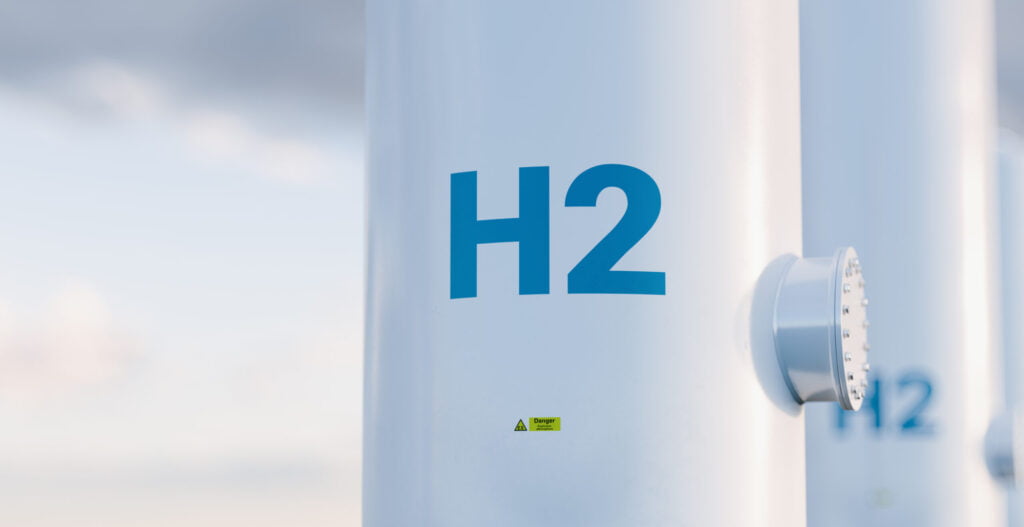New solutions for hydrogen pressure-Vessel manufacturers
Epoxies offers innovative solutions that support manufacturers in the design and production of composite pressure vessels for hydrogen storage and transportation. This includes high-performance resin systems for hydrogen pressure vessels.
All eyes on hydrogen
The 2020s will be a decade of change, with governments worldwide implementing ambitious hydrogen strategies to help meet emissions targets. Hydrogen costs are expected to drop significantly as production capacity increases, enabling hydrogen-powered fuel cell vehicles (FCEV) to become a cost-competitive, zero-emission solution for applications requiring long-range and fast charging times.
Beyond road vehicles, hydrogen is also generating interest in the aerospace, rail, and maritime sectors. Composite pressure vessels will play a key role in hydrogen storage, whether within vehicles or for transport and distribution, in order to build a cost-competitive hydrogen infrastructure.
Supporting manufacturers worldwide
Epoxy resins are key solutions for filament-wound composite type 3, type 4, and even type 5 pressure vessels. With a comprehensive range of epoxy-based resin systems, epoxy solutions are known worldwide for material performance, efficient manufacturing and increased productivity.
A tough regulatory landscape
The emergence of hydrogen storage has led to technical challenges, especially considering the increased pressure requirements that can range from 350-700 bars. Today, the Global Technical Regulation for Hydrogen and Fuel Cell Vehicles (GTR No.13) demands not only pressure testing with high safety margins, but also impact resistance, chemical exposure, and numerous temperature-pressure cycling tests, as shown in figure 1.

Figure 1: Sequential hydraulic cycling tests (source: https://unece.org/ – GTR 13)
Meeting stringent requirements
The pressure resistance of hydrogen vessels is mainly governed by the reinforcement fibres, but the resin matrix plays a key role in providing environmental exposure protection (thermal, chemical, impact) as well as fatigue/pressure-cycling resistance to withstand the filling and emptying cycles.
The severe pressure cycling test at 85°C, required by the GTR 13 standard, means that in practice, resin systems must have a glass transition temperature (Tg) of at least 115-120°C to avoid premature failure, even in hot/wet conditions.
Studies have shown that resin systems featuring high mechanical strength and high elongation at break can better support dimensional changes (strain) induced by pressure cycling, preventing crack initiation within the laminate even at maximum rated pressure. In addition, a high fracture toughness can enhance fatigue performance and impact resistance by reducing damage initiation and crack propagation. Standard epoxy systems have fracture toughness (KIc) values around 0.7 to 0.9 MPa.m1/2, whereas specialized epoxy systems can offer values as high as 1.7 MPa.m1/2, significantly improving pressure cycle and impact performance.
A range of manufacturing processes
Wet filament winding is a well-established manufacturing method, but increasingly resin injection (resin transfer molding, RTM) and towpreg winding are considered in order to meet the need for increased productivity and greater part consistency.
The RTM process consists of forming a braided fibre preform over an inliner, followed by fast injection of a fast cure resin system within a closed mould. Whilst equipment investment and process complexity may be high, there can be advantages for mass production of smaller pressure vessels.
Towpreg filament winding (using a pre-impregnated fibre tow) is gaining popularity for mass production of hydrogen tanks, mainly due to clean processing, improved part quality, fast winding speeds, and short cure cycles. Towpregs can be manufactured in-situ, with equipment available for speeds up to 100 m/min, which is both cost-effective and limits cold transportation and storage issues. Towpreg resin systems must offer low initial viscosity for fast impregnation, high storage stability at 23°C and the correct level of tack to enable bobbin unwinding and subsequent mandrel winding up to 5m/s without slippage. Curing can be via the classical oven process or by infra-red exposure. Prototypes have demonstrated that hydrogen vessels made with a state-of-the-art towpreg system can be cured as quickly as 30 minutes, whilst still providing the required toughness and hot/wet performance.
Faster, more robust processing
Achieving short cycle times whilst properly curing laminates up to 50 mm thickness can be a real challenge. The exothermic curing reaction can lead to temperature overshoots, damaging thermoplastic liners and creating high internal stresses. Definition of cure cycles often requires a large number of experimental trials and may never be fully optimized.
Simulation provides a valuable tool to quickly assess the effects of changes to cure cycles, gaining insight into all areas of the simulated part. Providing that a detailed material data model is available, accurate predictions of exotherm temperature, degree of cure and Tg can be made.
Figures 2 and 3 below shows how simulation makes it possible to visualize the temperature evolution at any point during curing of the pressure vessel.

Figure 2: Temperature prediction through thickness during curing

Figure 3: Temperature prediction of a pressure vessel cured at 150°C
Tg build-up and degree of cure can be visualized in a similar manner (figure 4).

Figure 5: Tg build-up prediction for a pressure vessel cured at 150°C
An experienced partner
Building on strong experience in challenging, cutting-edge technology, epoxy resin manufacturers can provide epoxy resin systems that address the emerging challenges and manufacturing requirements for hydrogen storage.
